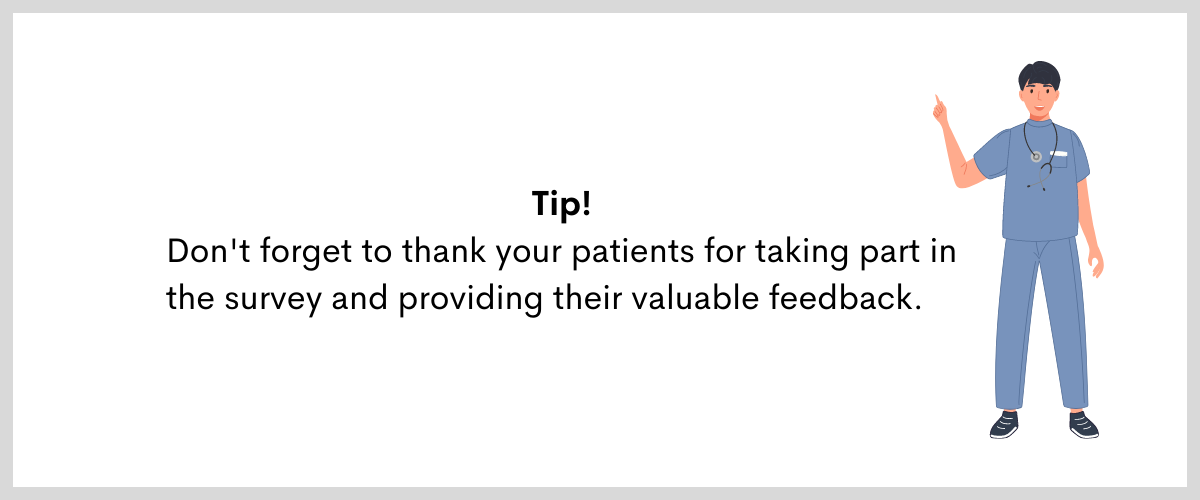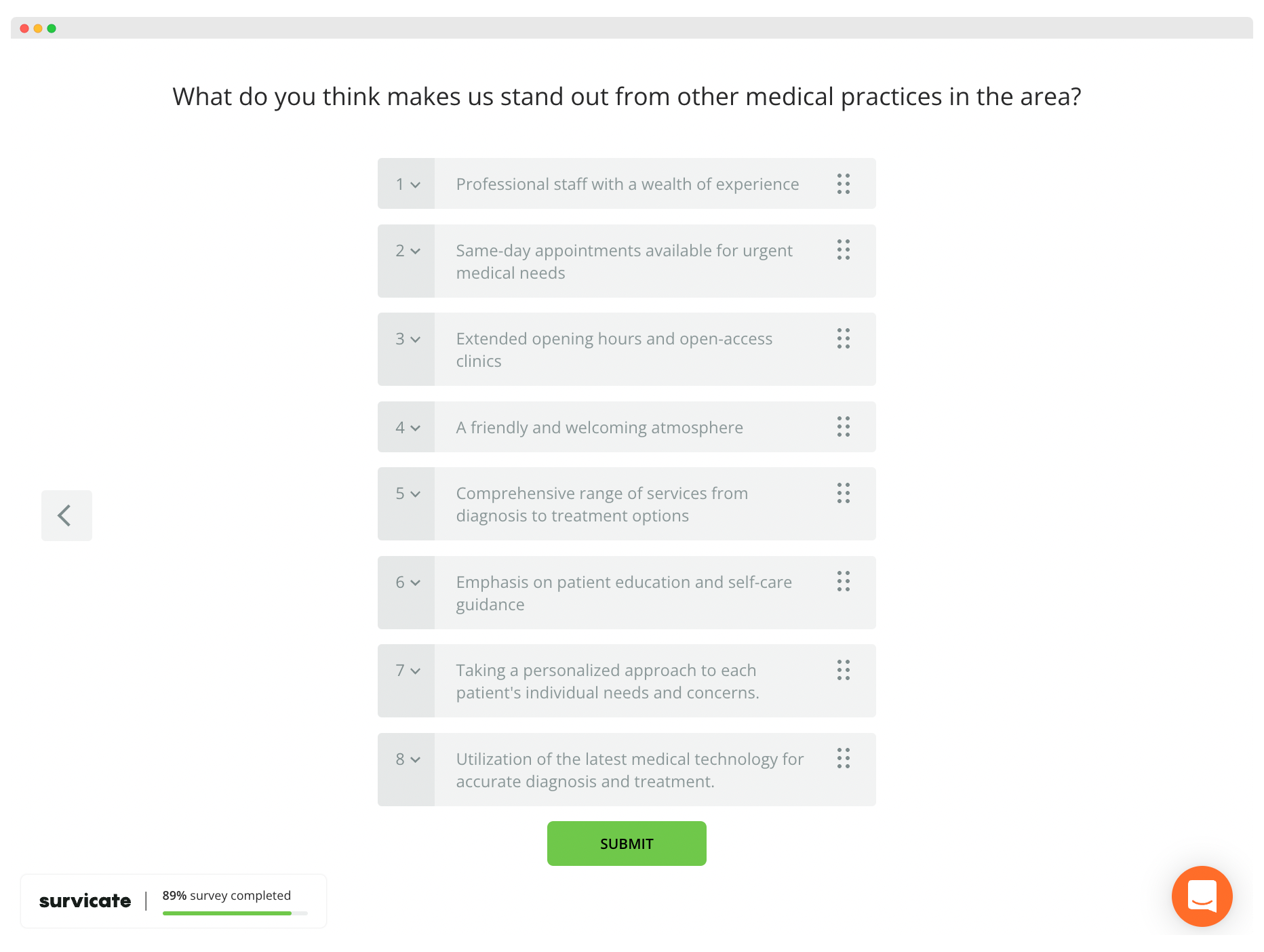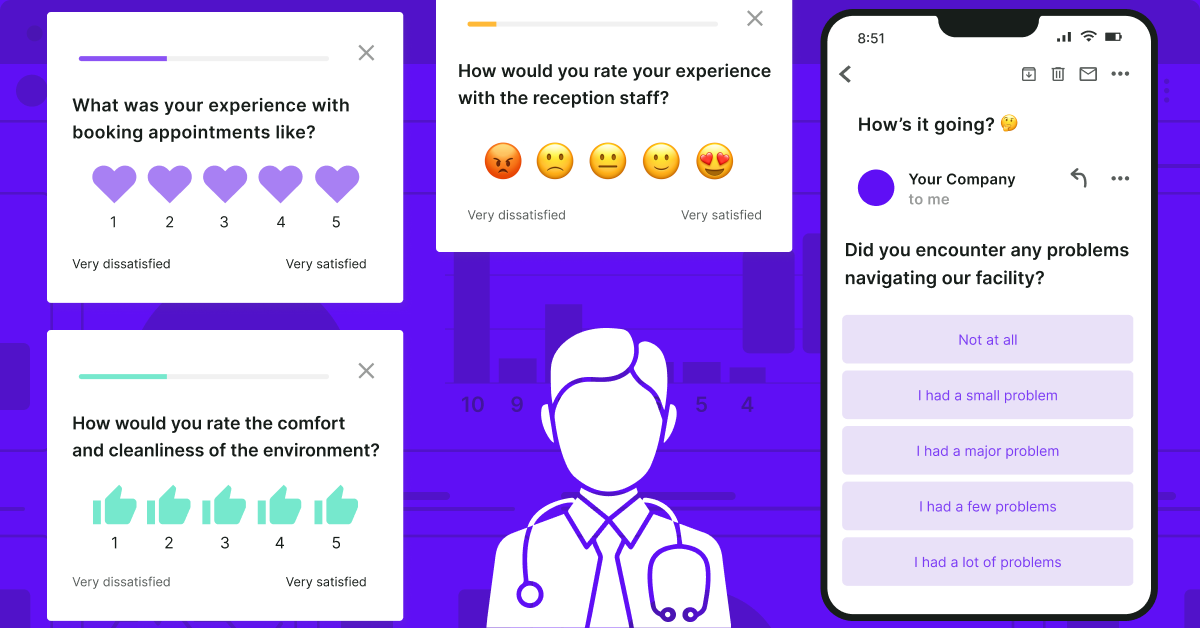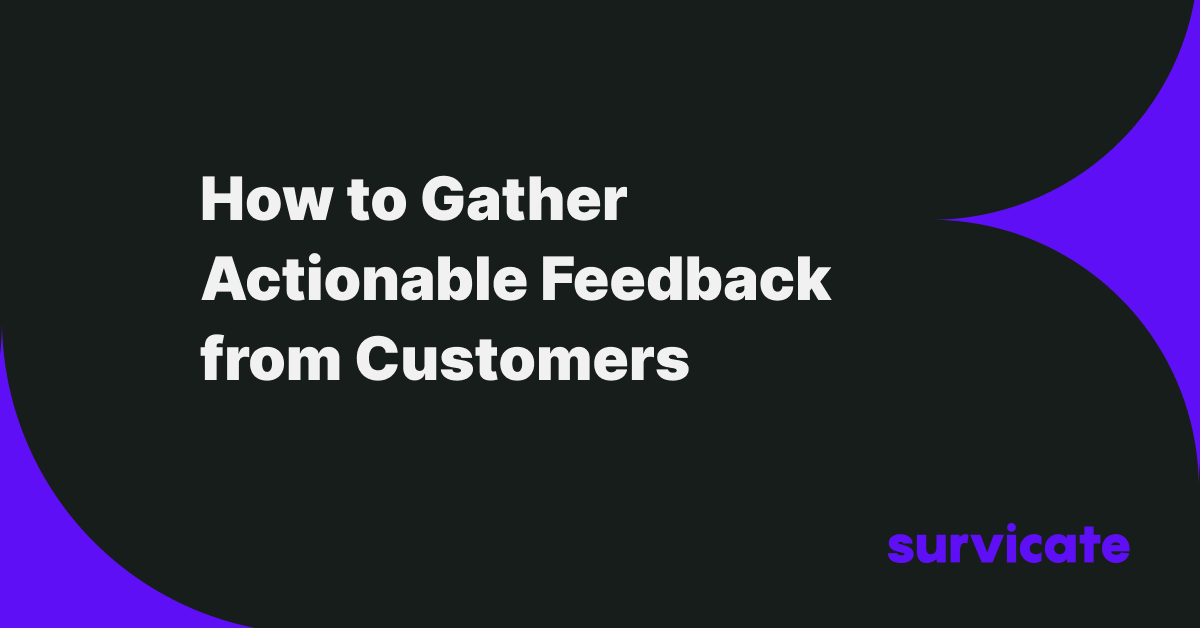According to research, 81% of patients are unsatisfied with their healthcare experience. In fact, the less interaction with a medical care system they have, the happier they are.
Understanding the entire patient experience is vital if you want to stand out from the crowd as a medical provider, whether the services you offer are online or offline.
Patient satisfaction surveys are key in helping you exceed the average healthcare provider standards.
We’ve put together the top 15 questions for you to ask in your patient satisfaction survey so that you can improve the overall experience.
Let’s give them a shot! 💉

Tips for healthcare providers who are just starting out with patient satisfaction surveys
Before we dive into the questions, let’s look at how to prepare your a perfect patient satisfaction survey.
Easy to understand and professional-looking 👩🏽⚕️
Keep it short, sweet, and free of unnecessary jargon. Structure the survey in a way that will help respondents to complete it quickly.
Responsive 📲
Make sure your patient satisfaction survey is accessible on desktop and mobile devices. As a result, you will give your patients the option to fill out the survey from any device they have, for example, while they are in the waiting room.
Transparent 🔎
Explain why you ask for patient feedback and how you will use it. Showing your patients that you value their opinion helps to foster trust.
With open-ended questions 📝
Ask open-ended questions instead of multiple-choice ones when possible. This will give you more detailed feedback and make it easier to get accurate results.
Tip! Think about offering an incentive for completing the survey, such as gift cards for free medical checks, which will help boost your response rate.
➡️To learn more about this topic, check out this article: Top 11 Survey Incentive Ideas to Use Without Breaking the Bank [Ultimate Guide]
Made with survey software 🚀
What if you want to add your online survey to a website, an email, or an app? You can do so without any hassle with the right survey software. Collecting patient feedback with Survicate is a breeze. It gives you access to 125+ expertly designed survey templates that you can implement with minimal effort.
Once the most important rules of creating patient satisfaction surveys are clear, let’s look at some example questions you could be asking.
#1 What was your experience with booking appointments like?
It's the question that should be asked first, as it's an essential part of the healthcare experience. Asking about booking appointments will help you understand whether patients have any issues booking them and if they are satisfied with the process in general.
This question could also go before or after a question about how the patient signed up for the appointment.
Tip! The process of digital booking appointments should be as straightforward as possible. The patient should have no trouble scheduling an appointment with a doctor without contacting the health center directly. Remember to automate the process as much as you can.
#2 How would you rate your experience with the reception staff?
The reception staff is the first point of contact with the patient. Often, the quality of interaction with the desk is key to overall patient satisfaction. That’s why you should aim to get your patients’ feedback on this part of their journey.
Tip! Making sure that all visitors get a warm welcome and feel comfortable on your premises at all times can significantly boost their satisfaction. You might want to invest in staff training to help them keep improving their communication skills.
#3 How would you rate the comfort and cleanliness of the environment?
Among the patient satisfaction survey questions, there should be one that helps you measure how clean your premises are according to the visitors. Cleanliness is not just important from the patient experience point of view—it’s also a matter of hygiene standards.
Tip! Create a welcoming atmosphere with comfortable seating and a spacious layout for a pleasant waiting room experience. Pay attention to every detail, such as lighting, temperature, etc. Patient perceptions of waiting times can be affected by all of these factors.
#4 Was the care you received consistent with your expectations?
The question is a good way to find out if the patient was satisfied with the treatment and if they achieved their health goals. To better understand what worked well for them and what needs improvement, you should also inquire about the treatments and services they received.
Tip! Provide patients with an opportunity to explain their concerns in detail if needed and provide an honest opinion. Also, keep in mind that a well-constructed follow-up question might be necessary if you need further clarification.
#5 Did the appointment take place at the scheduled time and date?
You are surely aware that providing timely appointments is crucial to keeping your patient satisfaction at the highest level. Remember to ask a follow-up question if someone answers "No" or "Somewhat" to find out how long the delay was.
Tip! Set realistic expectations when it comes to appointment scheduling. Also, try to keep waiting times to a minimum and encourage the reception staff to provide patients with timely updates about their appointment status.
#6 Did the medical professionals provide you with clear information about any further steps you may need to take?
Before any treatment or procedure, patients should receive enough information to make an informed decision about their care.
Make sure you ask your patients if the doctors considered their medical history when creating a treatment plan. The answers to this question will help you measure your medical professionals' performance and determine if the care they provide is individualized.
#7 Did you encounter any problems navigating our facility?
It can be extremely frustrating for patients to struggle to find their treatment room. This waste of time and effort impacts patients and puts unnecessary stress on healthcare professionals who try their best to run their clinics on time.
Improving facility navigability would boost customer satisfaction rates as visitors won't needlessly spend time searching through buildings before getting started with their appointment.

#8 Do you feel that our pricing is fair compared to other healthcare providers in the area?
The healthcare industry is extremely competitive, with dozens of providers offering various services and prices. Your pricing structure and billing process should be competitive and transparent to attract potential and existing patients.
Offering a straightforward price list can help reinforce trust between you and your patients, as well as build loyalty. Giving patients a breakdown of prices can help them make informed decisions about their healthcare costs.

#9 What do you think makes us stand out from other medical practices in the area?
It's time to figure out your unique selling points (USP). This will help you discover what makes your healthcare organization special and demonstrate this strength to patients.
Whether it's providing a specialized service that no one else offers or utilizing the latest technology, ask your patients what sets you apart from the competition and gives you an edge in the healthcare market in your area.

#10 Are you satisfied with the digital experience we provide?
According to Accenture, 94% of healthcare executives agree that the digital and physical worlds must be seamlessly integrated.
It means that having an intuitive website is no longer enough. You should provide at least some extra features, such as appointment reminders, online payment systems, or chatbots to answer frequently asked questions.
Tip! Consider investing in technology solutions that can help streamline administrative processes, such as electronic medical records (EMR) or telemedicine services. This will allow your practice to keep up with the fast-paced healthcare industry without compromising quality.
#11 Are there any services or treatments that could be provided faster or more efficiently?
The patient satisfaction survey template won’t be complete without questions about the patient’s experience with the speed and efficiency of service delivery.
By gaining insight into the bottlenecks in your practice, you’ll be able to make better decisions about allocating resources.
#12 Are there any additional features or services that we could add to make your experience even better?
Get inspired by your patients’ ideas on any other services they’d like you to provide. Expanding the range could also help you extend your market reach for new target audiences.
Tip! Offerings such as home care services, home birth, post-natal care, or health education programs are just some possibilities that could help differentiate your practice from other care providers.
#13 How likely is it that you will recommend our product to a friend or colleague?
The Net Promoter Score (NPS) is an important metric that measures customer loyalty. It can provide you with valuable insight into how your patients feel about your service, and it’s also a great way to measure the success of your patient assistance initiatives.
Understanding how likely patients are to recommend you to others is a reliable indication of their overall impression.
Tip! Survicate provides great NPS survey templates that you can customize according to your needs. Conducting surveys with this tool is extremely easy and allows you to quickly and efficiently measure patient satisfaction.
#14 Overall, how satisfied were you with your appointment?
This is another great question to ask your patients that will help you understand their overall perception of the care they received and let you identify areas for improvement.
Furthermore, tracking patient satisfaction over time can provide valuable insights into what’s working and what needs tweaking to ensure the best outcomes.
#15 Would you return to us for future medical treatments or visits?
This is a great question to ask your patients as it will give you an indication of how likely they are to use your services in the future.
When should you conduct patient satisfaction surveys?
The right timing is important when you want your surveys to have an impact on patient experience.
➡️The best time to conduct a survey is usually shortly after a patient’s interaction with the medical facility—ideally, on the same day. It gives patients a chance to reflect on their treatment and provides the most accurate picture of their satisfaction level while the experience is still fresh in their memory.
➡️You should send follow-up surveys a few days later to determine any changes in satisfaction levels. However, it's important to avoid conducting surveys during times of stress or crisis, as this can skew survey results.
➡️When it comes to the day of the week, research shows that weekdays during a low-peak time, such as early mornings, lunchtime, late afternoons, and post-work evenings, have higher response rates.
Wrapping up
While your patients certainly have more exciting places where they'd rather be, it is your priority to make them feel amazing while they are at your clinic. And to get to that point, first you have to ask them how they feel. These patient satisfaction questions are a great start in the right direction.
To make the process seamless for your patients and yourself, why not use modern survey software that does most of the legwork for you? Sign up for Survicate today for free and find out how effective it is to run patient surveys online.

.webp)






.svg)
.svg)
.svg)

.svg)


.svg)







.svg)




.svg)

















.svg)






























.svg)

.svg)
.svg)

.svg)



.svg)







.svg)

.svg)








